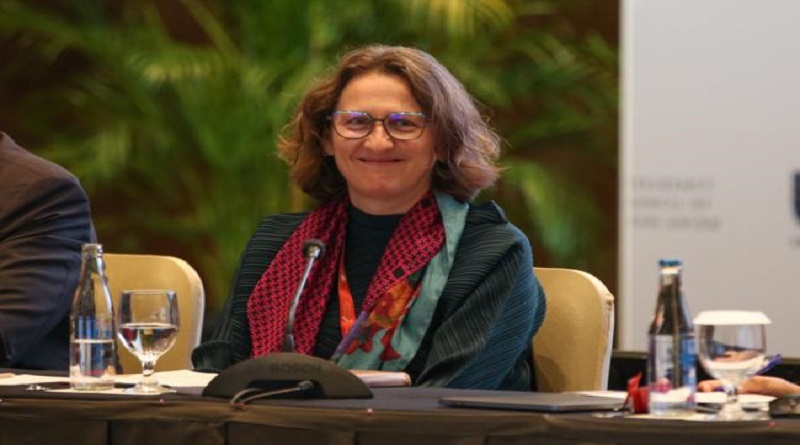Minamata Convention marks eight years of global progress to make mercury history
As the Minamata Convention on Mercury marks eight years since it entered into force, over 150 Parties and many stakeholders continue working to reduce mercury pollution worldwide. Preparations are underway for the sixth meeting of the Conference of the Parties (COP-6), which will take place from 3 to 7 November 2025, in Geneva, Switzerland.
“In these eight years, mercury-added products have been phased out, mercury-free alternatives are increasingly accessible and safer industrial practices are being adopted. These concrete achievements by Parties have led to reduced demand for mercury in industries and less emissions and releases to the environment”, said Monika Stankiewicz, Minamata Convention Executive Secretary. “Further strong action is needed to protect ecosystems and present and future generations, and in particular people vulnerable to mercury exposure”.
Since 16 August 2017, the Minamata Convention has taken significant steps to control the mercury supply sources and trade, reduce the use, emissions and releases of mercury, raise public awareness, and build the necessary institutional capacity. Together, Parties have taken action to phase out mercury-added products, including fluorescent lamps, thermometers, and mercury in cosmetics as well as to limit mercury use in industrial processes.
One of the Convention’s key areas of focus is artisanal and small-scale gold mining (ASGM), the largest source of mercury emissions worldwide. Parties across Africa, Asia, and Latin America are developing and reviewing National Action Plans to reduce, and where feasible eliminate, mercury use in this complex global development issue. These efforts aim to protect people directly exposed to mercury, particularly children and women of child-bearing age, such as pregnant women and including Indigenous women, who are disproportionately affected by mercury exposure.
The implementation work of countries is being supported through the Global Environment Facility (GEF), part of the Convention’s financial mechanism, and through initiatives such as the GEF-backed planetGOLD programme.
Carlos Manuel Rodríguez, CEO and Chairperson of the Global Environment Facility, stated: “The GEF is proud to help countries turn the Minamata Convention’s commitments into practical solutions that safeguard lives, restore ecosystems and support communities. Through planetGOLD, artisanal and small-scale miners are making important progress to break free from mercury and access better technologies to produce mercury-free gold and sell it through formal markets. These are important changes that directly affect peoples’ lives as well as environmental conditions across the countries we support”.
He added that “we look forward to ongoing ambitious work to reduce mercury emissions from industry, shift away from mercury use in artisanal and small-scale mining, and eliminate mercury from skin lightening and other products – these GEF-funded initiatives are fundamental to building a healthier and safer future”.
The Specific International Programme, the other component of the Convention’s financial mechanism, provides direct funding to 34 Party-led projects aimed at strengthening institutional capacity to meet their obligations under the Convention. Additionally, national reporting remains a key tool for tracking progress under the Convention and identifying challenges in implementation.
At the global level, cooperation with partners such as the Basel, Rotterdam and Stockholm (BRS) Conventions and contributions to frameworks like the Global Framework on Chemicals and the Global Biodiversity Framework are helping to address shared environmental challenges and generate co-benefits.
Osvaldo Patricio Álvarez Pérez, COP-6 President (Chile), highlighted that “by joining forces to put the Minamata Convention into action alongside other environmental efforts, we can face shared challenges head-on and make a bigger difference. I am committed to working with all Parties to find common ground and protect people and the environment from the dangers of mercury pollution”.
COP-6 will address challenges that Parties face in implementing the Convention, such as trade control, waste management and mercury use in cosmetics, dental fillings, artisanal and small-scale gold mining and industrial processes. It will also address enhanced cooperation with other global agreements and international partners on pivotal topics like biodiversity, and the full and effective participation of Indigenous Peoples and also local communities.




